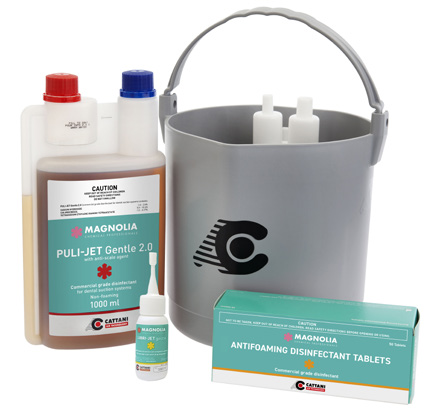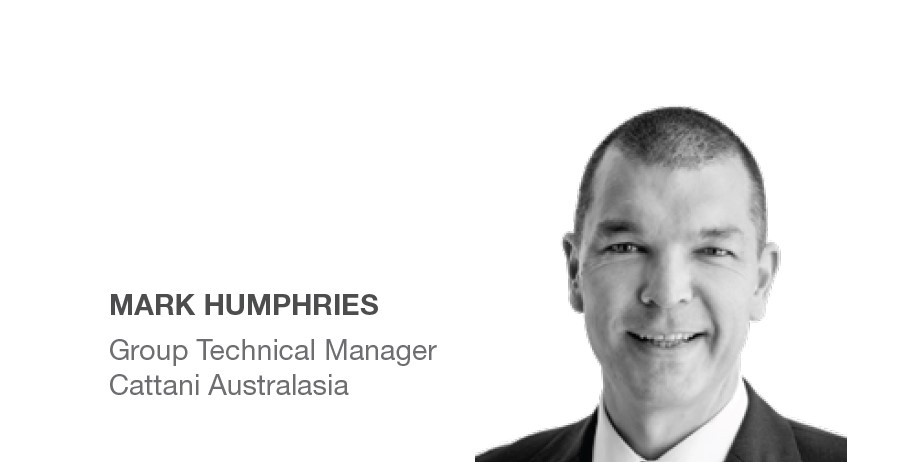As part of a local team of practicing and former dental service technicians (including founder Bill Clark), we at Cattani Australasia completely understand the risks of infection exposure when it comes to dental suction systems.
As a result, this drives us to focus on a holistic infection prevention and control approach in delivering world-class dental air.
“The Cattani legacy is the embodiment of where our quality comes from, and what we stand for today. From developing large installation modular solutions through to the development of disinfection products for dental suction to mitigate risks of infection to dental professionals, patients and maintenance staff, Cattani Australasia has been painstakingly refining precision performance to keep your surgery operating safely for more than 35 years in Australia.”
Mark Humphries
Your health and safety obligations
Those who operate in the dental health workspace are not only responsible for providing a safe environment where dental health care is being delivered, but also for mitigating the risks of infection for everyone who uses or supports the operation of dental suction systems.
As patients and staff members that operate within this area are generally front of mind when it comes to infection prevention and control for dental suction
systems, the duty of care extends to all the other individuals that may come in contact with the system.
This may include anyone that may enter the plant room. Keep in mind that suction systems within the plant room will undergo weekly and annual routine maintenance as well as potential irregular maintenance, including the collection of amalgam retention containers for recycling purposes.
Differentiating products to be used on medical devices
As Cattani dental suction systems are medical devices, disinfectants intended to be used on Cattani plant equipment are heavily regulated. Cleaners intended to be used on medical devices that do not claim to be a device disinfectant or sterilant are regulated as Class I medical devices.
Liquids, sprays, wipes, and aerosols intended to be used on medical devices that make disinfectant or sterilant claims are regulated as Class IIb medical devices. Puli-Jet Gentle 2.0 is an example of a Medical Device Class IIb, registered an antimicrobial solution made to disinfect dental medical devices.


Details that matter
- Non-foaming
- Ease of use
- Phenol FREE
- Aldehyde FREE
- Disinfects and cleans
- One disinfectant, one dilution, once-a-day
Dental suction disinfection and its impact on suction performance
To ensure optimal suction performance at a dental surgery, it is crucial to have extensive forethought and planning. From the gradient of the pipelines to the distance between the suction unit and chair, through to selecting the appropriate solution used for disinfection, correct suction maintenance is an important part of keeping your surgery operating at its finest.
Whilst it is common practice to disinfect suction lines at the end of each working day, it is also wise to manage the potential of foam emerging within the dental suction system.
Foam management is critical as it can be pulled into the suction motors which can cause damage or even equipment failure if repeated over time, as this component was designed to always remain dry.
Within the dental suction system, foam could occur in several ways including:
a) certain dental treatments that have a large amount of dense liquids such as blood, mucus, and thick saliva; or
b) using unsuitable detergents and cleaners containing ingredients that produce foam.
To address this, there are Antifoaming Disinfectant Tablets to complement end-of-day suction maintenance, for clinics that want an extra level of disinfection throughout the treatment day and want the added benefit of managing foam to protect suction performance.
Conclusion
Dental suction system maintenance is about protecting your business asset, as much as infection prevention and control for all individuals that may come into contact with the dental suction system. Only choose the approved disinfectant that meets your dental practice infection prevention and control requirements and is suitable for use with your dental suction system.

Article Published in Nov/Dec 2022 Dental Solutions